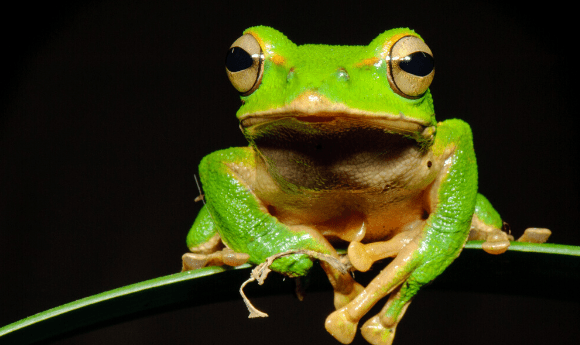New insights into sexual differentiation in frogs

A team of biologists has shone a light on the complex evolution of sexual differentiation in different species of frog from the family Pipidae.
Invariant phenotypes, where the phenotype remains relatively constant and is insensitive to environmental changes, are considered the hallmark of biological importance. However, it has been theorized that invariant phenotypes could be controlled by diverged genetic systems in different species.
In a new study, published recently in Molecular Biology and Evolution, researchers from McMaster University (ON, Canada), Max Planck Institute for Evolutionary Anthropology (Leipzig, Germany) and the University of Texas at El Paso (TX, USA) have explored how sexual differentiation, an important invariant phenotype, is controlled in frogs.
Utilizing modern techniques, the research team studied Dm-w, the gene known to trigger female development, in over two dozen different species of the family Pipidae, a family of frogs found in tropical South America and sub-Saharan Africa.
“Sexual differentiation is fundamentally important in an evolutionary context,” explained lead author Ben Evans (McMaster University). “Once you have a system that works so well, one might expect that natural selection would guard against changes to that system. This is why it’s so surprising that the genetic basis for sexual differentiation in fact evolved extremely rapidly in pipid frogs.”
- Sex matters for Alzheimer’s risk
- Why can XY mammals develop female sex organs?
- Producing offspring of same-sex parents
The team discovered that the genes regulating sexual differentiation differed significantly across the different breeds. In some species, the Dm-w had become empowered into a potent female-specific sex-determining gene; however, this was not the case across all Pipidae species.
In some species, the researchers observed the loss of the Dm-w gene in female frogs. It had been replaced by an unknown gene, suggesting that the Dm-w gene had ceased functioning over time. Furthermore, in others, the researchers unexpectedly discovered that the gene present in both sexes, suggesting the gene had become sidelined.
Among the findings, the researchers also uncovered evidence for the existence of an ancestral W chromosome that is found in many females and some males. They were able to determine that this W chromosome has experienced autosomal segregations.
Seven distinct systems for regulating sexual differentiation in closely related species were identified, though the researchers feel that there is likely more. These systems are distinct in their genomic locations, evolutionary origins and male versus female heterogamy.
These findings demonstrate how the developmental control of sexual differentiation has changed throughout evolution of the Pipidae family at a rapid pace and, further, offers insights into the novel factors that impact the evolutionary fates of sex chromosomes.
“The results of this study,” remarked Evans, “reminds us that evolution happens no matter how important a certain mechanism or trait might be.”





